Recording what’s found below the surface of Welsh waters
Reviewing footage
After spending days and nights out on the water deploying BRUVS to exciting moment of reviewing 101 hours of footage. Unfortunately, a few BRUVS deployments failed or the cameras had been dragged due to the currents and therefore were unable to be used. BRUVS footage allowed for the opportunity to observe a range of species which aren’t usually seen whilst carrying out scuba diving surveys. Before going through the footage, a spreadsheet was created in excel to record the important deployment details as well as details obtained from the footage such as habitat type, species recorded and MaxN of species of interest for analysis later. Going through the video footage can be time-consuming but not knowing what will pop into the next frame makes the viewing exciting.
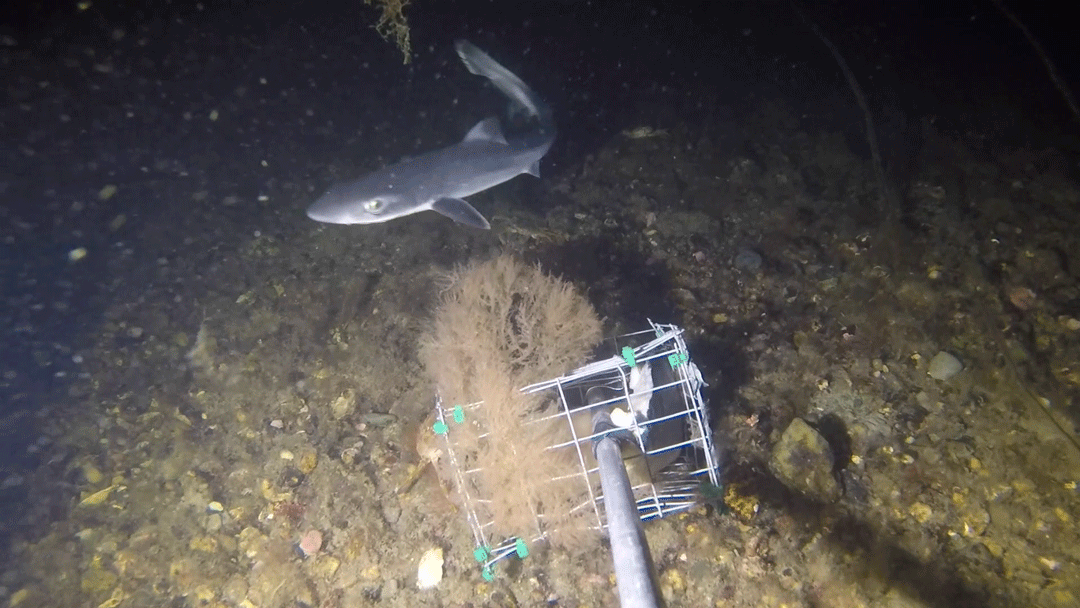
Tote pup. Photo © Jake Davies
What species were captured during the deployments?
A total of 48 species were recorded from cephalopods to sharks. Many of the species such as black bream tend be shy and therefore are often spooked by divers during surveys. Footage of these species provides important information on the numbers which are found within the area.
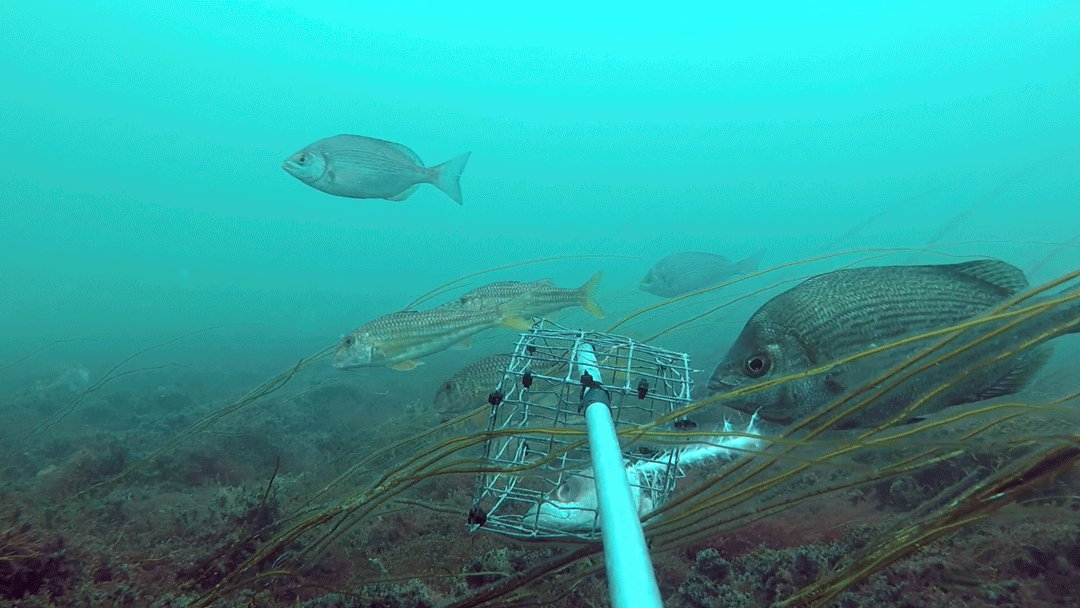
Black bream along with Red Mullet in the background. Photo © Jake Davies
For elasmobranchs, a total of 5 species were recorded which include 2 ray species (Spotted Ray & thornback ray) and 3 shark species from the common lesser-spotted catsharks, to the larger less common Tope or schooling shark. Importantly the BRUVS didn’t just pick up adults but also recently born pups as well as sub-adults which was exciting to see.
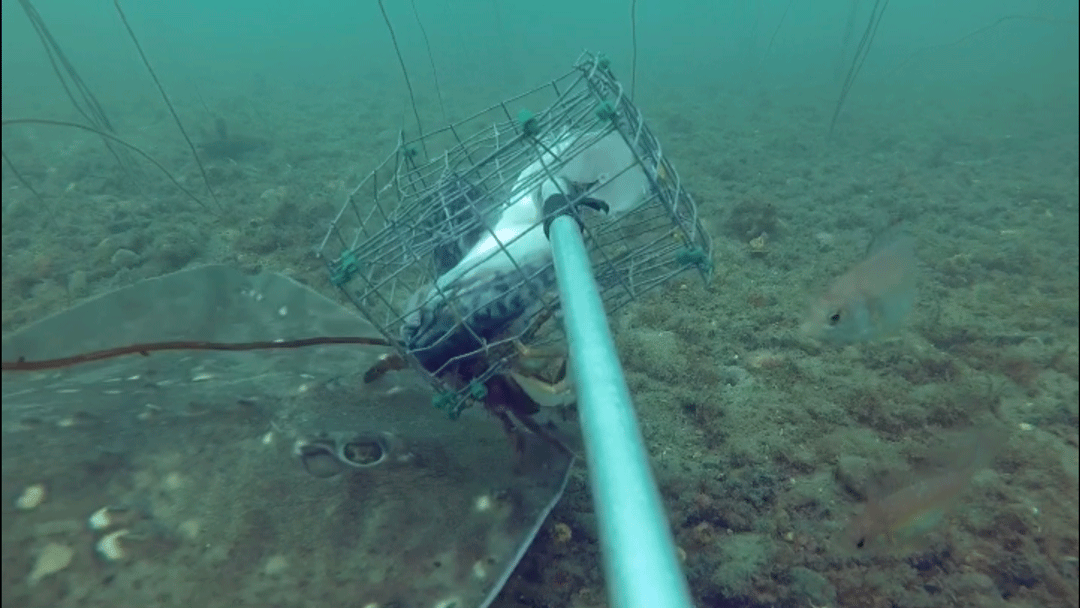
A thornback ray. Photo © Jake Davies
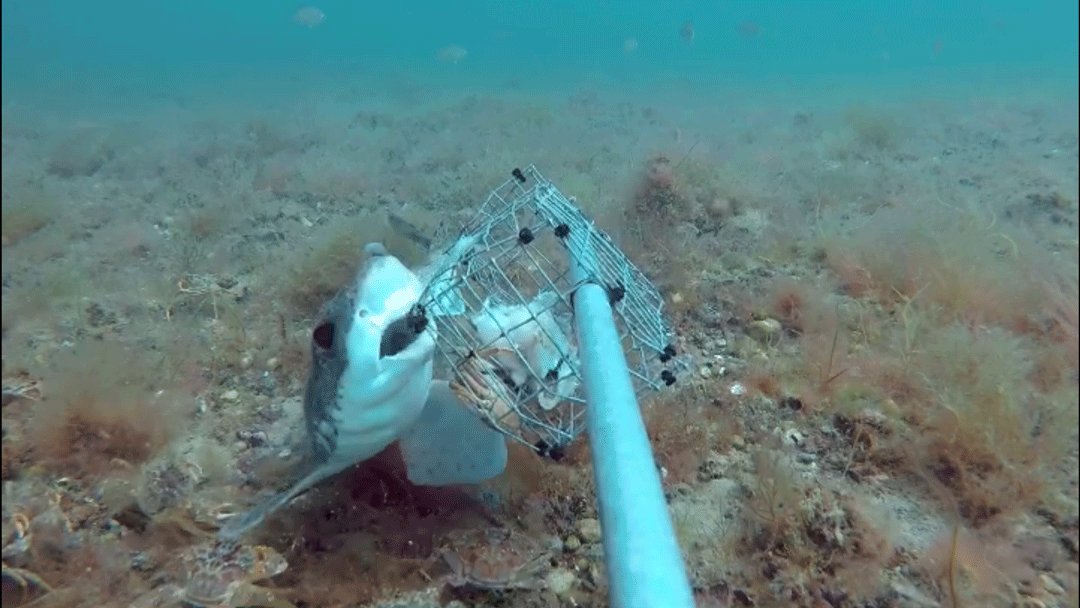
Lesser spotted catshark. Photo © Jake Davies
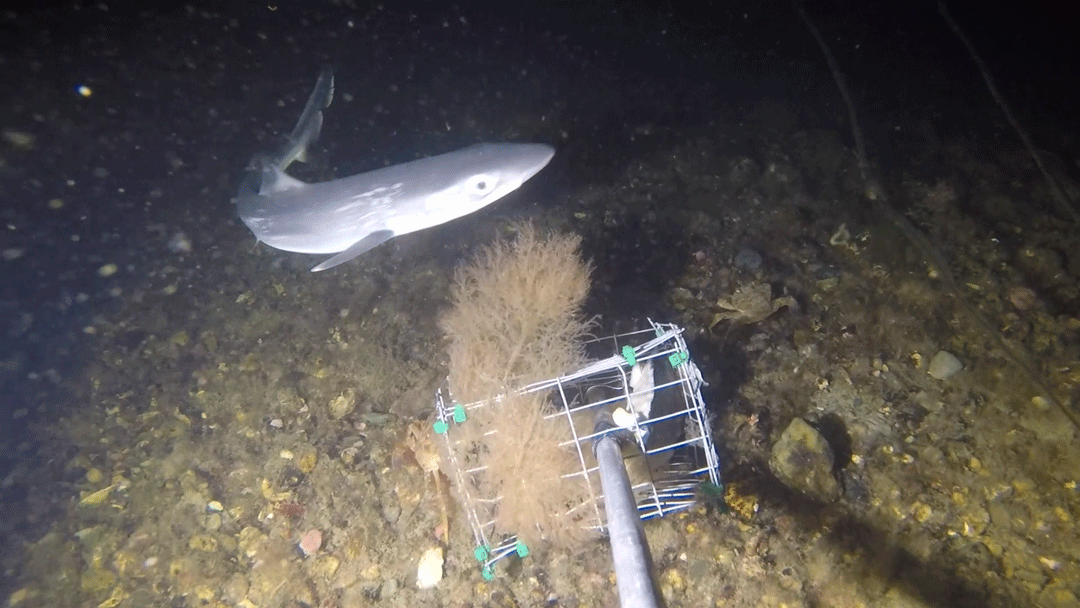
Tope pup. Photo © Jake Davies
Pelagic species such as Atlantic Mackerel and the less common horse mackerel were also observed on multiple occasions.

Scad. Photo © Jake Davies
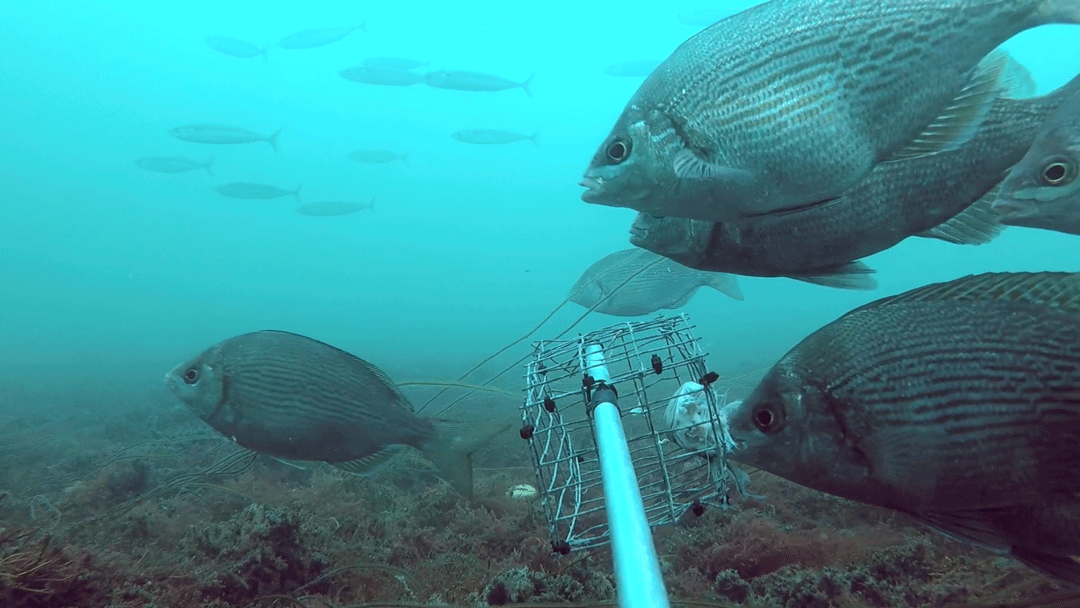
Shoal of Atlantic mackerel in the background with Black bream in the foreground. Photo © Jake Davies
10 crustaceans were recorded on the BRUVS, where the large Spider Crab was often a burden by blocking the view of the camera. They also provided interesting viewing when 2 large males arrive at the bait at the same time.

Spider Crab. Photo © Jake Davies
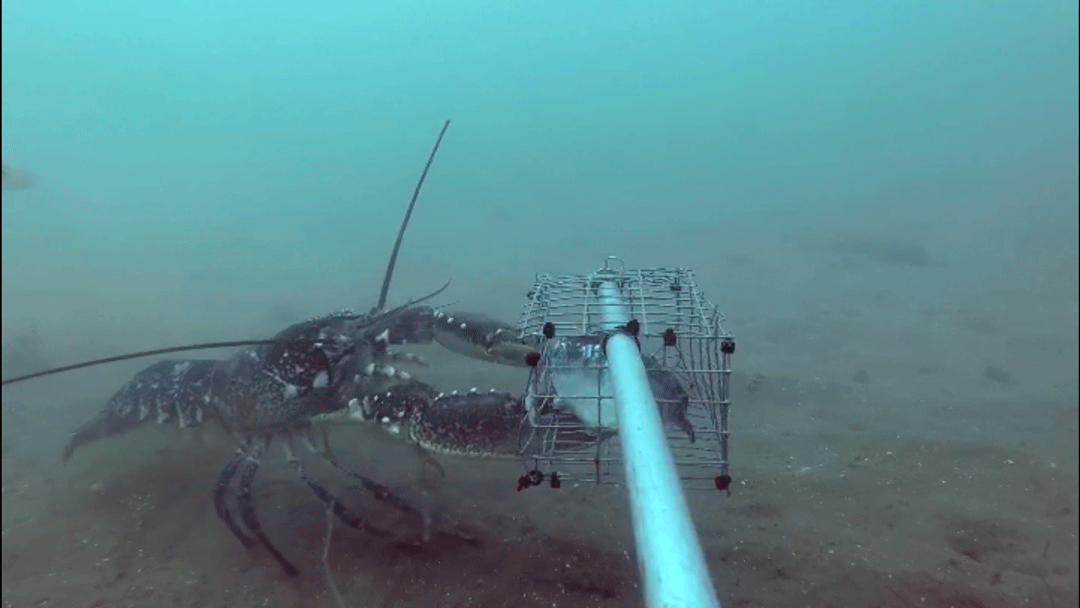
European Lobster. Photo © Jake Davies
During the deployments no Angelsharks were recorded, however, more will be found out about the use of BRUVS and Angelsharks during the upcoming trip to the Canary Islands.
To find out more about the project and the deployments along the Welsh coast watch the recently released short interview:
